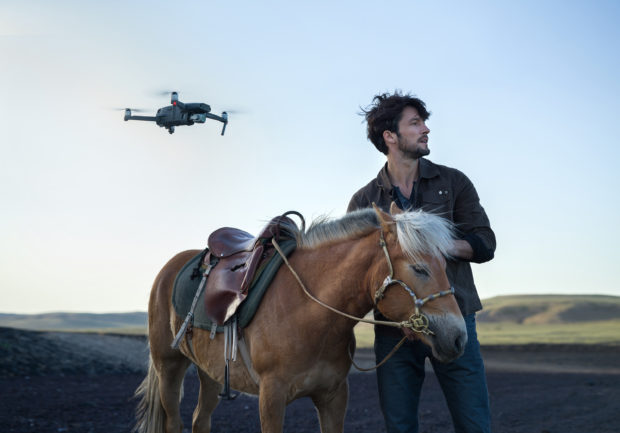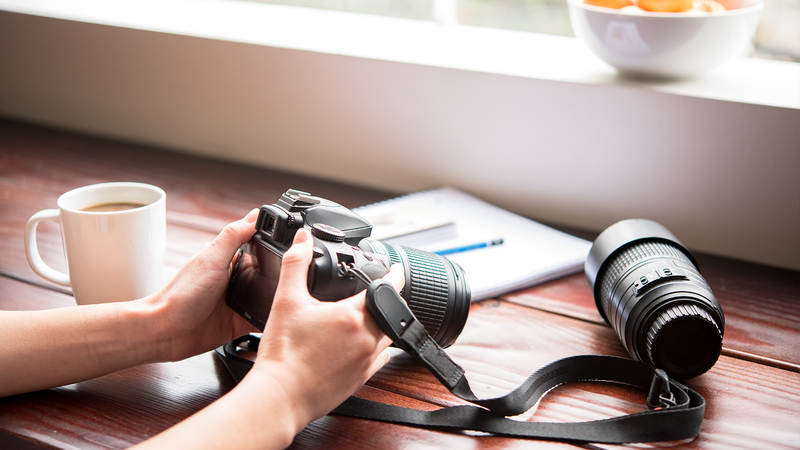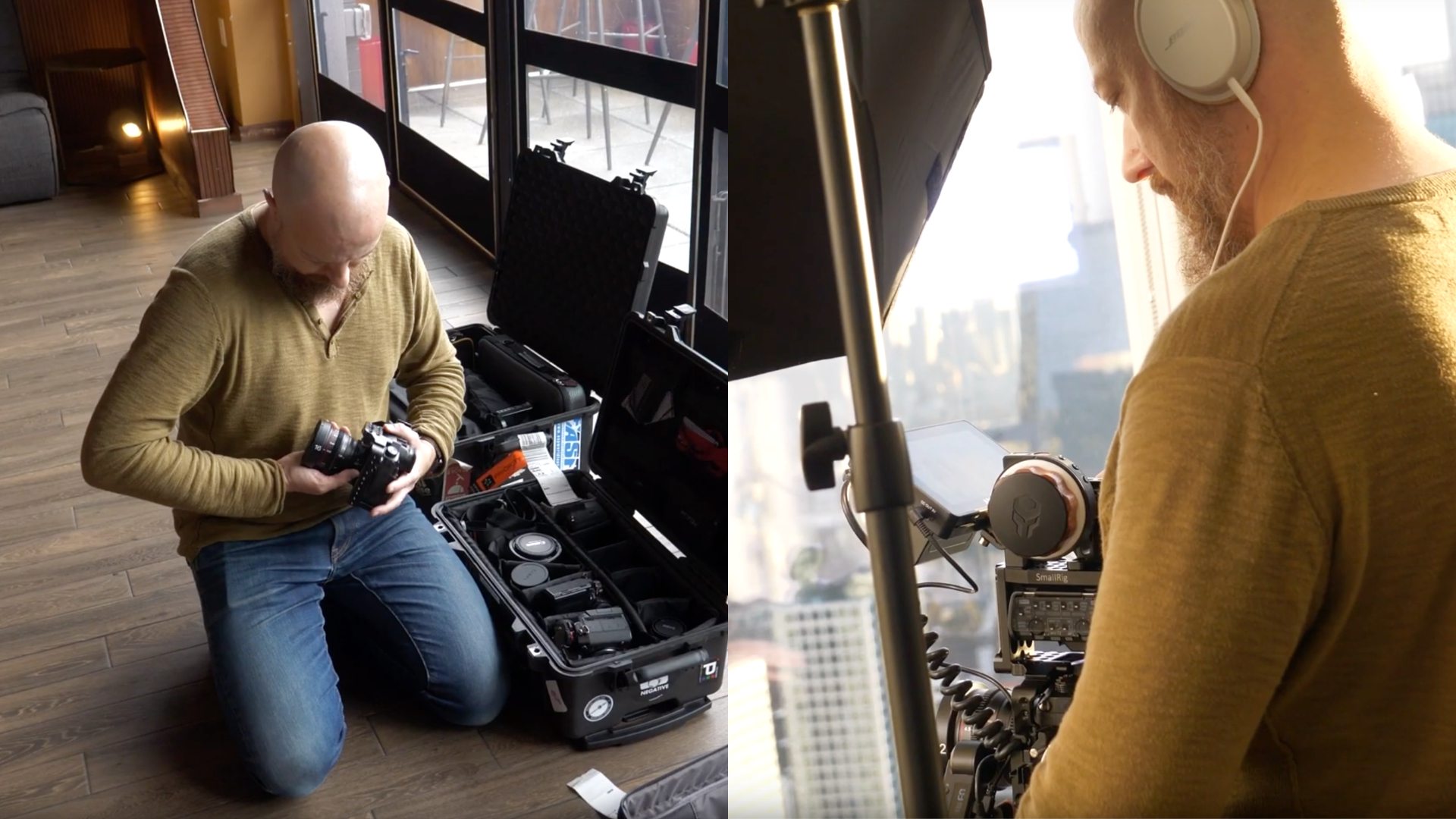Tips & Tricks

Tino Soriano: Awarded National Geographic Photographer
1x Blog-Tips & TricksLive interview by Editor Vicente Dolz
Tino Soriano (Barcelona, 1955) began taking photographs before there were 3 cameras per inhabitant, before the same picture was taken 4,000 times a day, long before post-photography, just when photography was more of a profession than entertainment.
For more than 25 years he has done travel photography as well as reports. He is a member of National Geographic Society and has won countless prizes and recognitions.
Among his many books, the latest, ‘Ayúdame a mirar, La biblia del reportaje gráfico’ (Photoclub 2109) is a compendium of anecdotes that can be read in a very enjoyable way and which is becoming a bestseller.
Also, ‘Los secretos de la Fotografía de Viajes’.
I was lucky enough to meet Tino precisely at the presentation of that book, during the pre-lunch with The Railowsky Foundation. He did not stop telling curiosities and experiences of his photographic life... and he has not few!
But, let’s start with the interview.
Tino, the first question is almost compulsory: tell us how you got started in photography.
I studied education at university and, coinciding with the last years of Franco-ism, at least while Franco was still alive, we were always on strike. Tired of doing nothing, a friend invited me to develop a film roll and enlarge the photographs we had taken that very afternoon at university. To see how a white sheet of paper was immersed in a bucket of liquid and the images appeared as if by magic was a discovery for me. I knew that this was what I would want to do all my life: embalm people and moments.
I seem to remember that your photographic beginnings have to do with medicine, don't they?
My father was a doctor and he wanted me to follow in his footsteps. I started studying, but when my parents divorced I lost interest. Nonetheless, I started to work as an administrative and afterwards as an audiovisual technician at the São Paulo Hospital, so I became familiar with operating rooms, laboratories and research departments. Also, people knew me and that allowed me to take pictures without having to do the tremendous amount of paperwork that is now required in such circumstances.
I had the opportunity to attend one of your talks and noticed that the whole forum was very attentive to your comments and explanations. Do you consider yourself communicative?
Yes, it is an essential part of my job. I take pictures to communicate, to share experiences. We now have some fantastic tools, although, above all, reading and personal contact contribute a lot. That's why I have been writing the book 'Ayúdame a mirar' for a quarter of a century. It is a mixture of experiences and advice given to me by the great photographers I have met in my professional life.
How did you start working for National Geographic?
I showed a set of 30 slides I had in my pocket to Tom Kennedy, the magazine's director of photography. Charles Kogod, the graphic editor of the book division, also saw my work on my website. They all encouraged me to join a unique entity in the world because of the legacy of their work.
You've had famous photographers as teachers. All of them must have left a mark on you in one way or another, but is there anyone who has made a special impression on you?
I think that Elliot Erwitt and Alex Web instilled to me intangible qualities close to my photography, but of course each and every one of my references was very important in my training.
You have also been involved in social report photography, if you can call it like that, of the disadvantaged in one way or another. Do these kinds of jobs change someone’s life?
Needless to say. Knowing the least friendly side of the world helps you to consider your own life and your relationships with others, especially with the factual powers. In any case, I have learned much more from the humble than from the billionaires, although I have got along with all of them thanks to my job.
You've been around the world three times. Doesn't it make you dizzy? I mean, doesn't it make you tired, what in fact seems like a great opportunity?
On the contrary, this kind of experience is like drinking sea water. The more you consume it, the thirstier you get. I am preparing the next one, although it is not easy to find a sponsor for this kind of project.
In your travels all over this world's length and width (ha-ha), which place has impacted you the most in terms of its photographic beauty and which one has impacted you the most emotionally speaking?
Well, this was a phrase of Captain Tan, the actor Felix Casas, one of the main characters of the Chiripitiflauticos. I admired him because I also wanted to say that same sentence when I grew up... but, answering the question, because of their beauty I like some areas of China and as far as the emotional side is concerned I'll opt for Italy.
You are also very involved in childhood cancer disease; would you like to tell us something about it?
I believe I was the first photographer in the world who, between 1987 and 1992, did extensive work on this subject. Then I published a new book two decades later. My intention was to visualize the scarcity and problems that these children were suffering from and, at the same time, for their parents to have more information about what was going to happen, once the disease was diagnosed.
I seem to remember you telling me that you were requested to do a reportage on the best trains in the world, isn't that a dream?
Indeed, it was my first big reportage for National Geographic. The pressure was very great because they paid for the tickets of each train, which costed a fortune, so that as a journalist and photographer I was not forced to avoid criticism, if necessary, because my ‘guest’ status prevented me from doing so. And besides, all the production cost... it was a time when you worked with film roll and had to send all your rolls to Washington to have the photos developed. Someone would see absolutely everything you had taken, no picking out the best images. On one occasion all my rolls disappeared under the Twin Towers. It was September 11th, 2001.

Banyoles Lake, Girona, Spain – 6'
What equipment do you use? Marca? Digital? FF?
I have used Leica for many years, but for the past five I've been using Olympus digital cameras almost exclusively. I've always had the 35mm or its equivalent as base lens, a more extreme angle if I work in tiny places, and a short telephoto lens for some portraits and certain landscapes.

'Banyoles Lake, Girona, Spain - 2'
Do you usually work on your own?
If I can, I do, but I am helped a lot by eventual assistants who help me to solve procedures, open doors or translate what people tell me. What in the lexicon we call ‘fixer’.
Do you feel like Clint Eastwood in The Bridges of Madison County?
One of my best friends at National Geographic is James Standfield. He inspired Clint Eastwood to play the role of Robert Kincaid. But in real life it's impossible to pick up and take good pictures if you want to do both well. You have to choose and one disables the other. I consider myself as a photographer...

'TRADITIONAL MEDICINE IN THE WORLD - 4'
Which of your photographs do you like best? Why?
I generally like the images in my report 'Fotografía con una sonrisa' because they show the pleasant side of life. If we become transcendent, we should look for one among my work of human slavery (La Zafra) or those obtained during 30 years of photographing medicine. What I do not know is which... each photo is an experience.
If you are not close enough, won’t you be able to take a good photo?
This is a great phrase of Robert Capa that helps to improve, in general, the content of the photos; but it is also true that with time you learn to move away to add important information that with proximity can be lost.
How many photographs do you have of Banyoles Lake?
Forty years of looking for a good picture.
Who are the photographers inspiring you?
The one that inspires me the most is Robert Capa, but also Eugene Richards, Paolo Pellegrin, Eugene Smith, Robert Doisneau, Ellito Erwitt, Alex Web, David Alan Harvey and the Spanish Guillermo Asián, Navia or Cristina García Rodero. But there are many more, at least thirty of them.
A person like you who has travelled so much for professional reasons, do you still feel like travelling for pleasure?
Yes, although I would have to do it without a camera.
And finally, any advice, recommendations to those who are starting out?
That they take fewer pictures and observe more. The most everlasting pictures are taken with the heart. There is no joy without a look.
My gratitude to Tino Soriano for having answered so kindly and cordially as always to our questions
(we can have lunch whenever you want!).
Thanks also to Carlota, who has helped me so much with her opinion in this interview.
Translation by Carla Belda Silvestre
. '














































